Cacti have long fascinated plant lovers with their resilient nature, diverse forms, and stunning blooms. While many are familiar with common species like the Prickly Pear or Golden Barrel, the world of cacti is full of rare and unusual varieties that offer exotic shapes, dramatic textures, and unexpected colors. These extraordinary specimens are must-haves for any succulent enthusiast or collector looking to add something truly unique to their indoor or outdoor plant collection. Here’s a list of 10 rare and unusual cacti varieties you’ll fall in love with.
1. Bishop’s Cap (Astrophytum myriostigma)
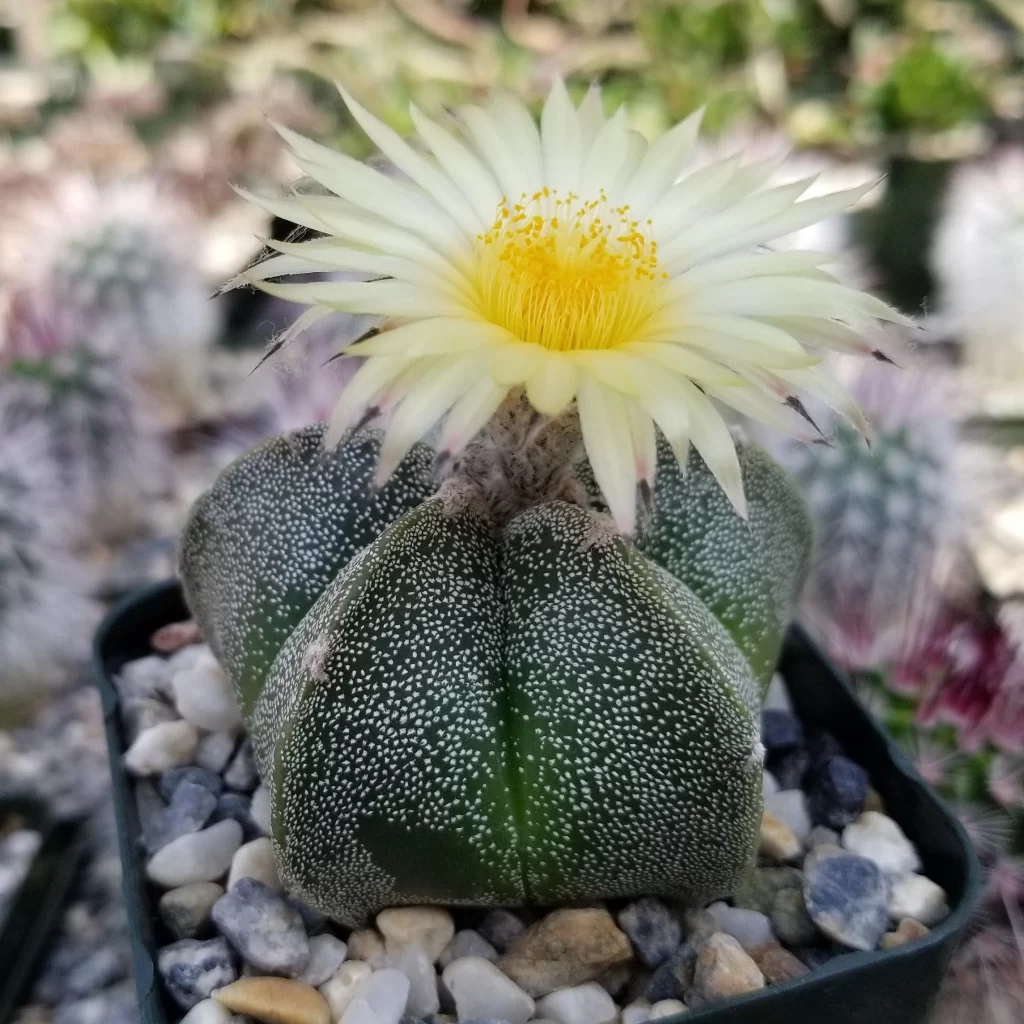
This elegant, star-shaped cactus is known for its rounded, spineless body divided into five pronounced ribs. Bishop’s Cap features a dusting of white speckles that give it a beautiful, velvety appearance. Native to Mexico, this slow-growing cactus thrives in well-drained soil and bright light. In spring, it produces delicate yellow flowers that contrast beautifully with its grey-green skin. Its sculptural form makes it a striking standalone plant for minimalist or modern succulent displays.
2. Brain Cactus (Mammillaria elongata ‘Cristata’)

As its name suggests, the Brain Cactus grows in fascinating, twisted, and crested formations that resemble the folds of a brain. Its unusual growth pattern is the result of natural mutation, making each plant unique. This compact cactus has dense clusters of tiny spines and can produce small, pinkish flowers along its ridges. Perfect for windowsills or rock gardens, the Brain Cactus thrives in bright, indirect light and prefers to dry out completely between waterings.
3. Living Rock Cactus (Ariocarpus fissuratus)
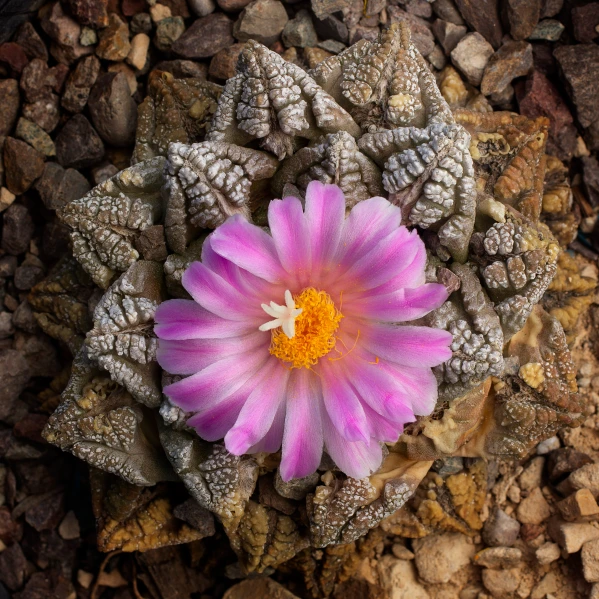
One of the most intriguing and elusive cacti, the Living Rock Cactus camouflages itself with the soil and surrounding rocks in its native habitat. It features flattened, triangular tubercles that form a rosette shape and produce stunning magenta-pink flowers in the fall. Growing extremely slowly, this cactus requires excellent drainage and minimal watering. Its unique, rock-like appearance and rarity make it a prized specimen for collectors of unusual succulents and desert plants.
4. Totem Pole Cactus (Lophocereus schottii ‘Monstrosus’)
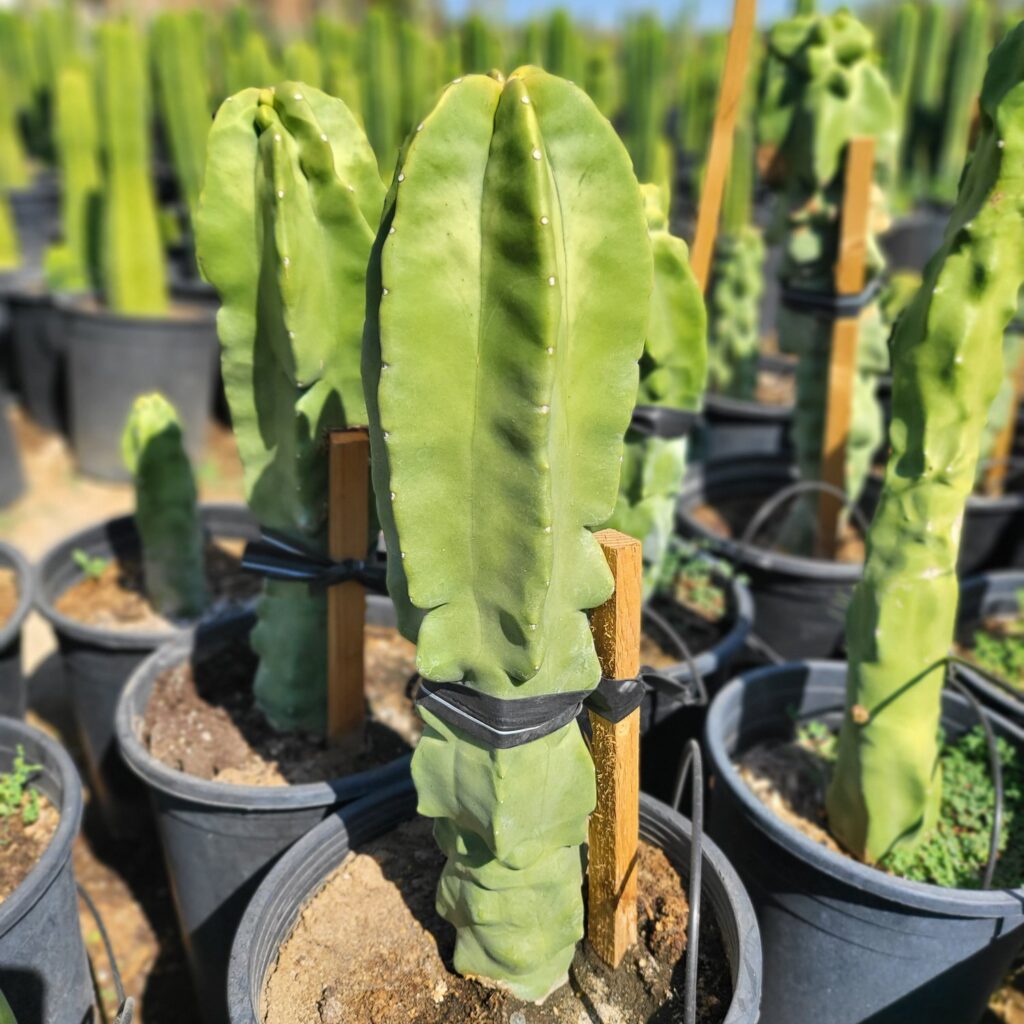
This bizarre and eye-catching cactus is known for its tall, smooth, knobby columns that grow up to 10-12 feet outdoors. Unlike most cacti, the Totem Pole Cactus lacks sharp spines, making it a friendly addition to cactus gardens and patios. Its knotted, irregular form adds architectural interest, and it thrives in full sun and sandy, well-drained soil. While it rarely flowers in cultivation, its unique form alone makes it a conversation-starting addition to any collection.
5. Paper Spine Cactus (Tephrocactus articulatus var. papyracanthus)
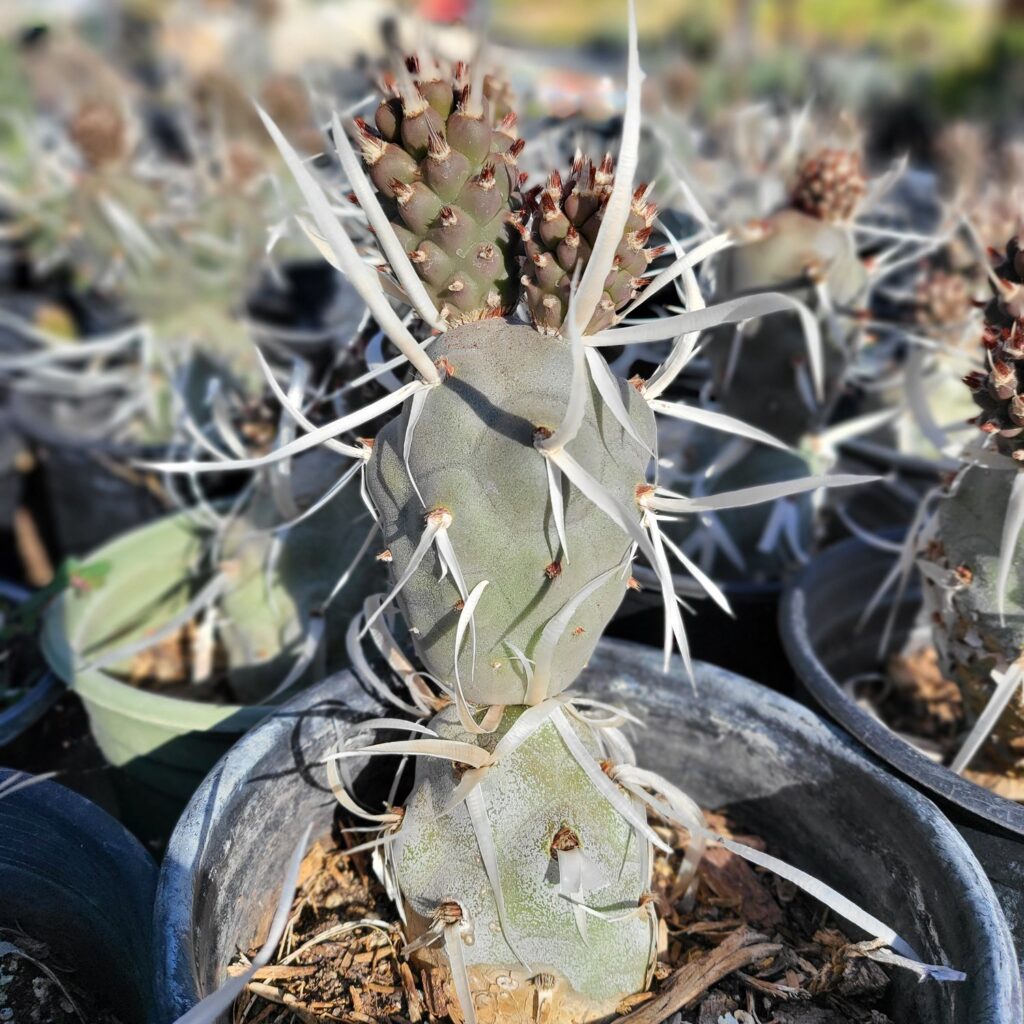
Distinguished by its papery, flattened spines that resemble delicate strips of parchment, this unusual cactus is native to Argentina. Its segmented, blue-green stems grow in irregular, branching clusters, making it a fun and sculptural plant for succulent arrangements. Paper Spine Cactus prefers bright light and minimal water, thriving in dry conditions. Its papery spines add a whimsical texture, while occasional white or yellow flowers add to its appeal for succulent enthusiasts.
6. Moon Cactus (Gymnocalycium mihanovichii var. friedrichii ‘Hibotan’)
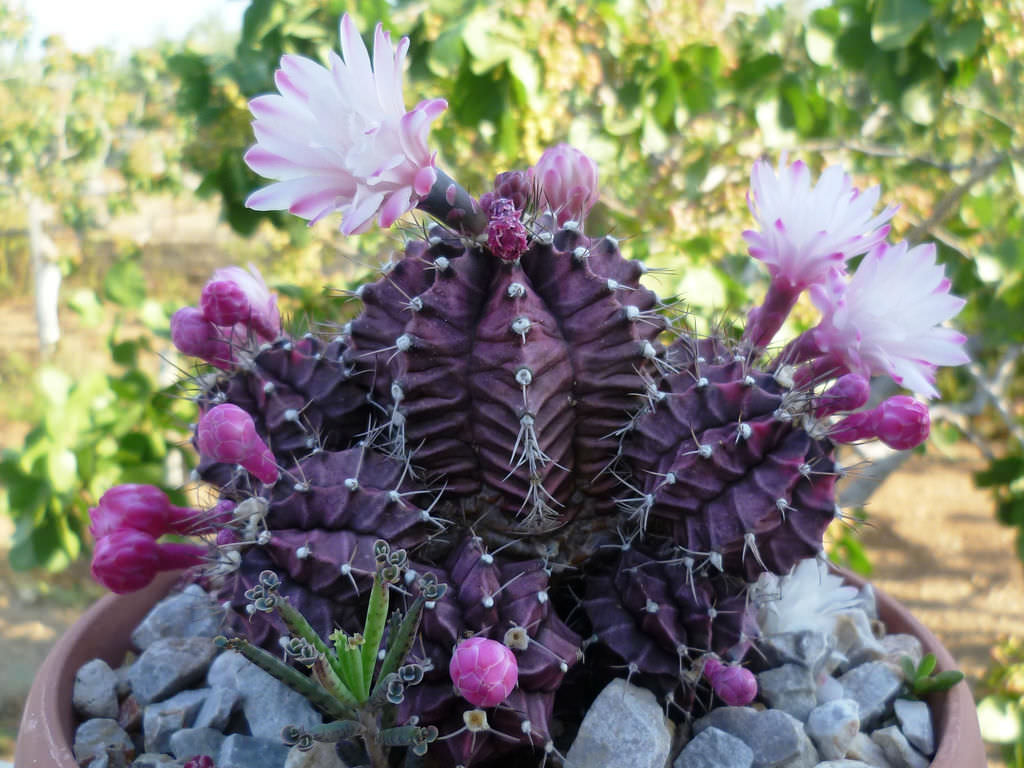
The Moon Cactus is instantly recognizable for its vibrant, grafted tops in shades of red, pink, yellow, and orange. Since the colorful upper cactus lacks chlorophyll, it’s grafted onto a green cactus base for survival. This small, quirky plant thrives in bright, indirect light and well-drained soil. Perfect for tabletops and small containers, the Moon Cactus adds an instant pop of color to indoor succulent displays and makes a fantastic gift for plant lovers.
7. Golden Rat Tail Cactus (Cleistocactus winteri)
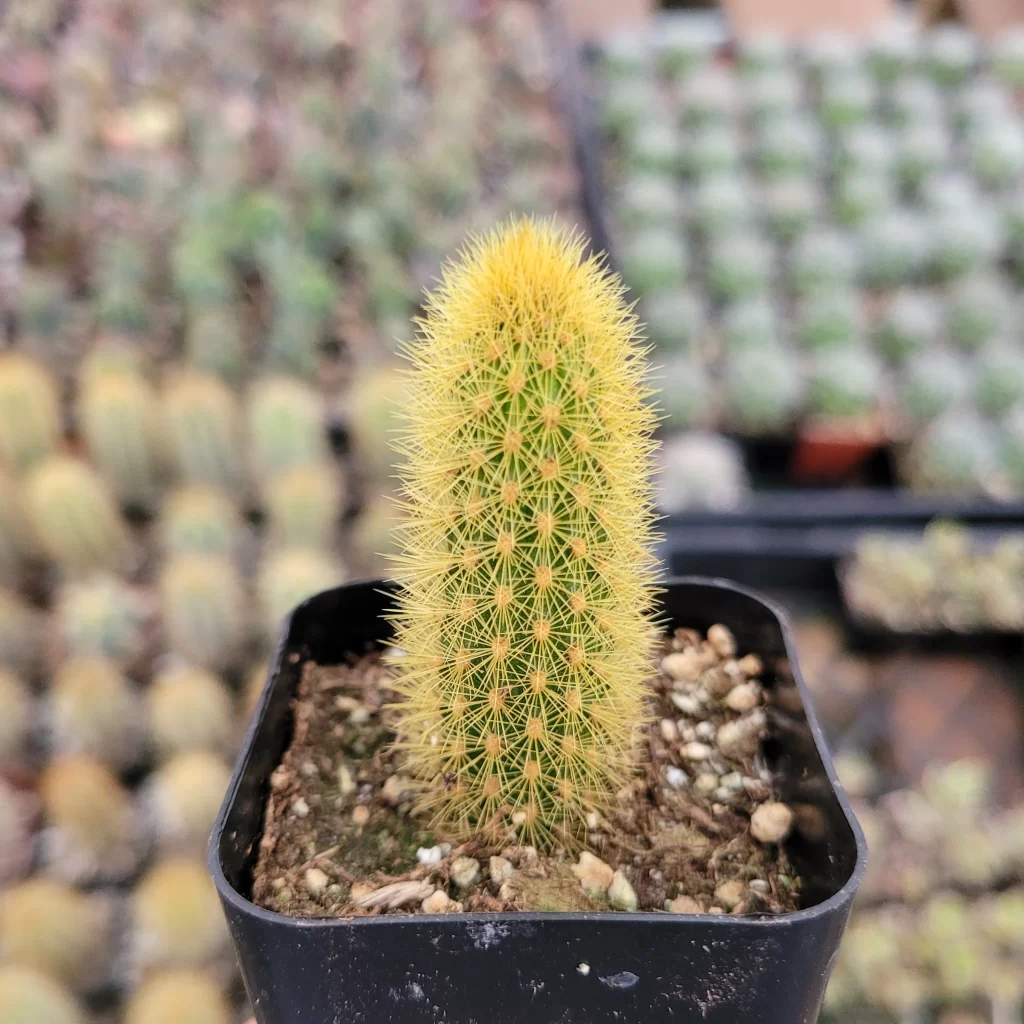
This rare trailing cactus is known for its long, slender, golden-yellow stems covered in soft spines. Ideal for hanging baskets or cascading displays, the Golden Rat Tail Cactus produces stunning, tubular, orange-pink flowers in spring and summer. It loves full sun and well-drained soil, tolerating drought with ease. Its elegant, flowing form makes it a beautiful and unusual accent for balconies, patios, or indoor plant shelves.
8. Sand Dollar Cactus (Astrophytum asterias)
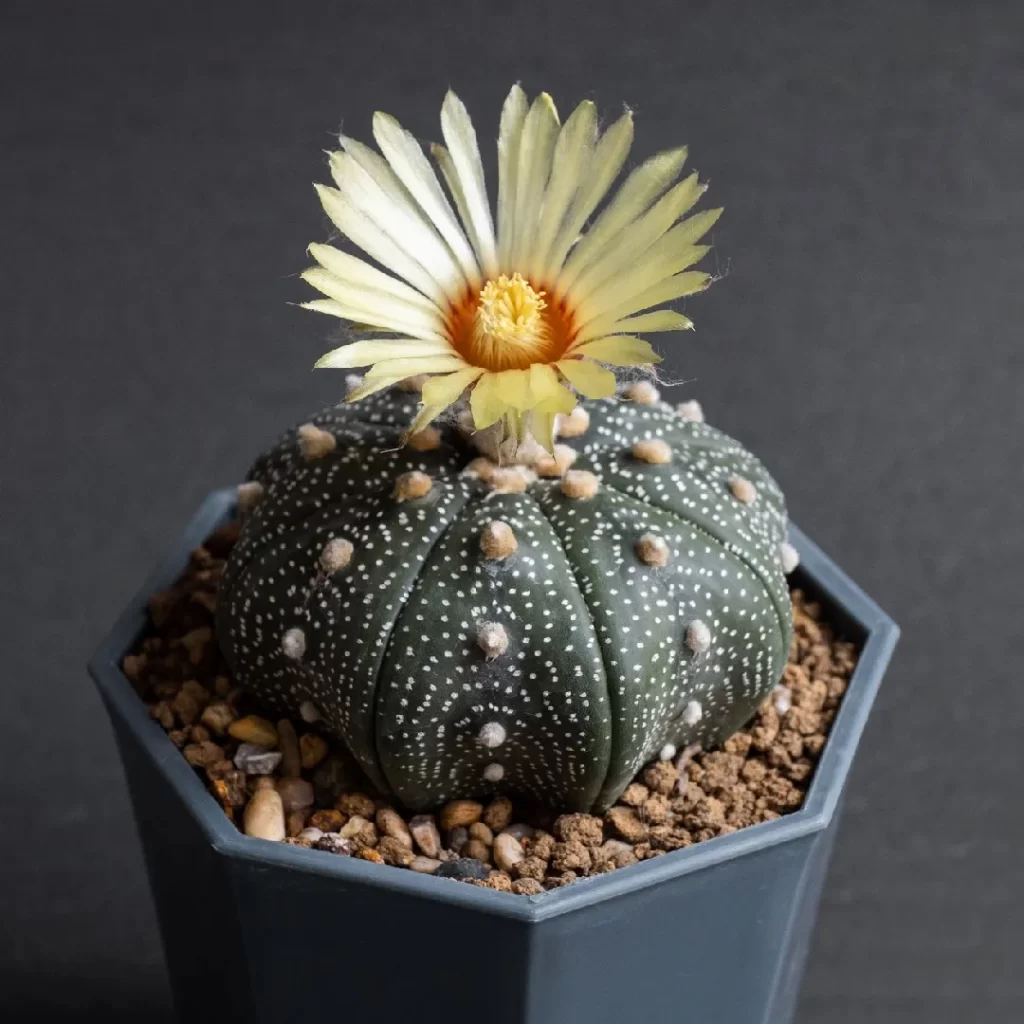
A collector’s favorite, the Sand Dollar Cactus is a spineless, flattened, disc-shaped species with pronounced ribs and speckled white dots on its green surface. In summer, it produces large, showy yellow flowers with orange centers. Native to Texas and northeastern Mexico, it thrives in full sun and gritty, well-drained soil. Its compact size and distinct appearance make it perfect for small pots, dish gardens, or cactus collections where space is limited.
9. Silver Torch Cactus (Cleistocactus strausii)

This striking, columnar cactus grows up to 10 feet tall and is covered in dense, silvery-white spines that give it a frosted appearance. Native to Bolivia, the Silver Torch Cactus produces vivid, tubular, reddish-pink flowers that emerge horizontally from its stems. It thrives in full sun and well-drained soil, requiring minimal water. This cactus’s dramatic, upright form and contrasting colors make it a standout specimen in xeriscapes, rock gardens, and large succulent containers.
10. Old Man Cactus (Cephalocereus senilis)
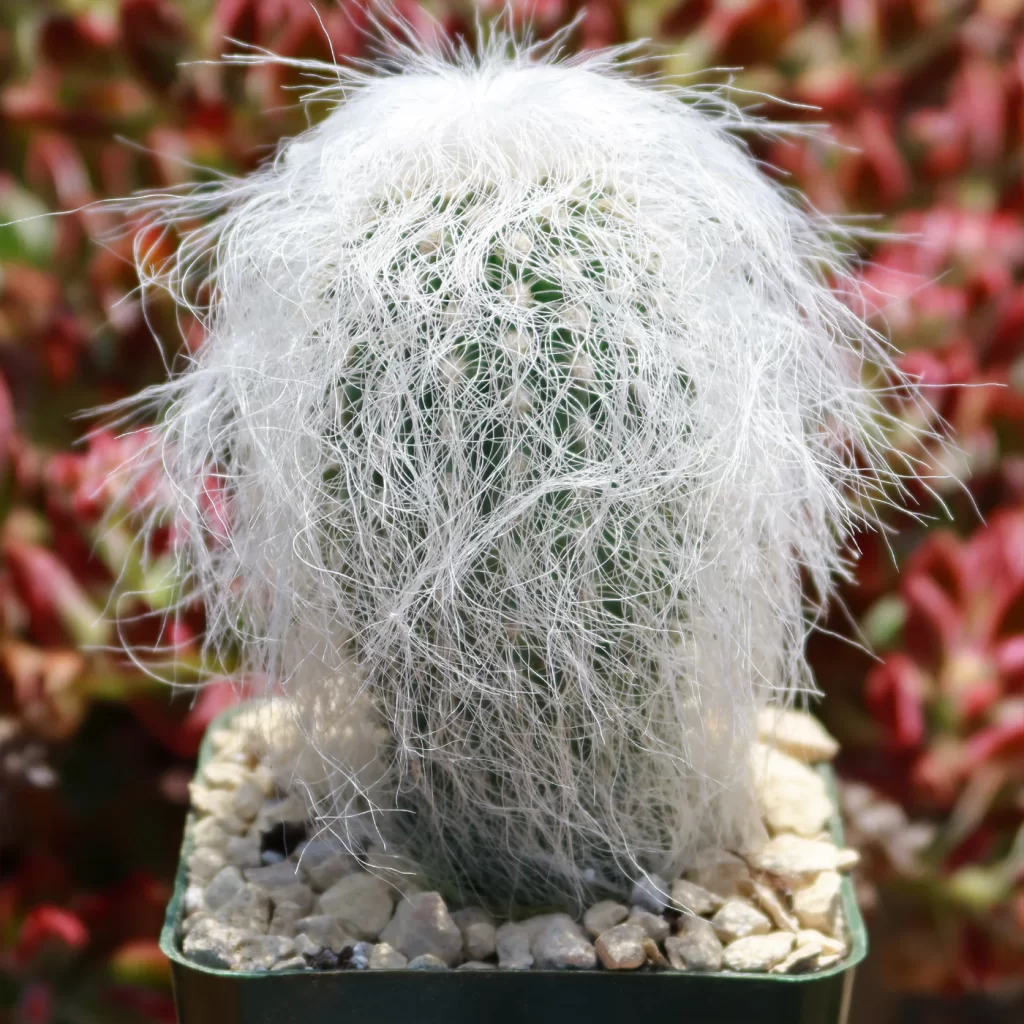
Known for its shaggy coat of long, white, hair-like spines, the Old Man Cactus adds charm and whimsy to any collection. Native to Mexico, it can grow several feet tall, though it remains compact in containers. The hair helps protect it from the harsh sun and temperature extremes. This cactus thrives in full sun with occasional watering. Its unique, fuzzy texture makes it a favorite among collectors and a great conversation starter in cactus displays.

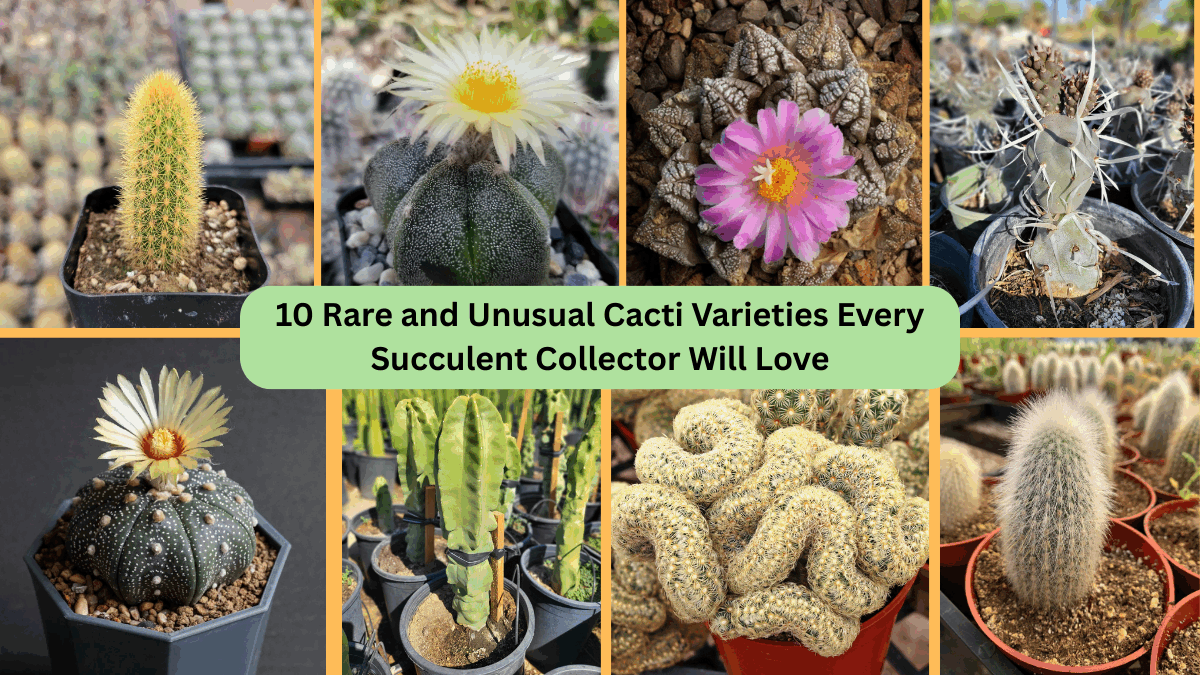





Leave A Comment